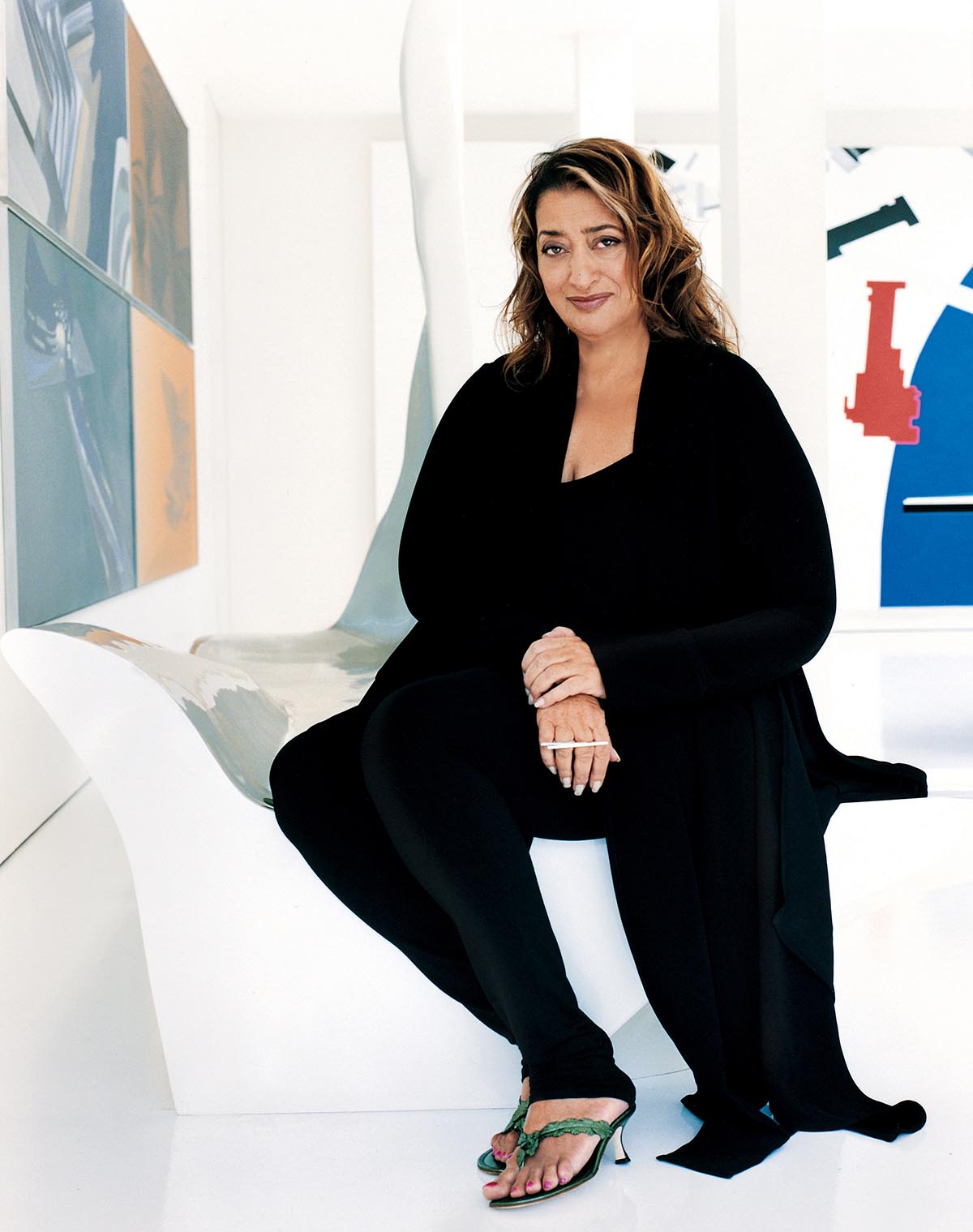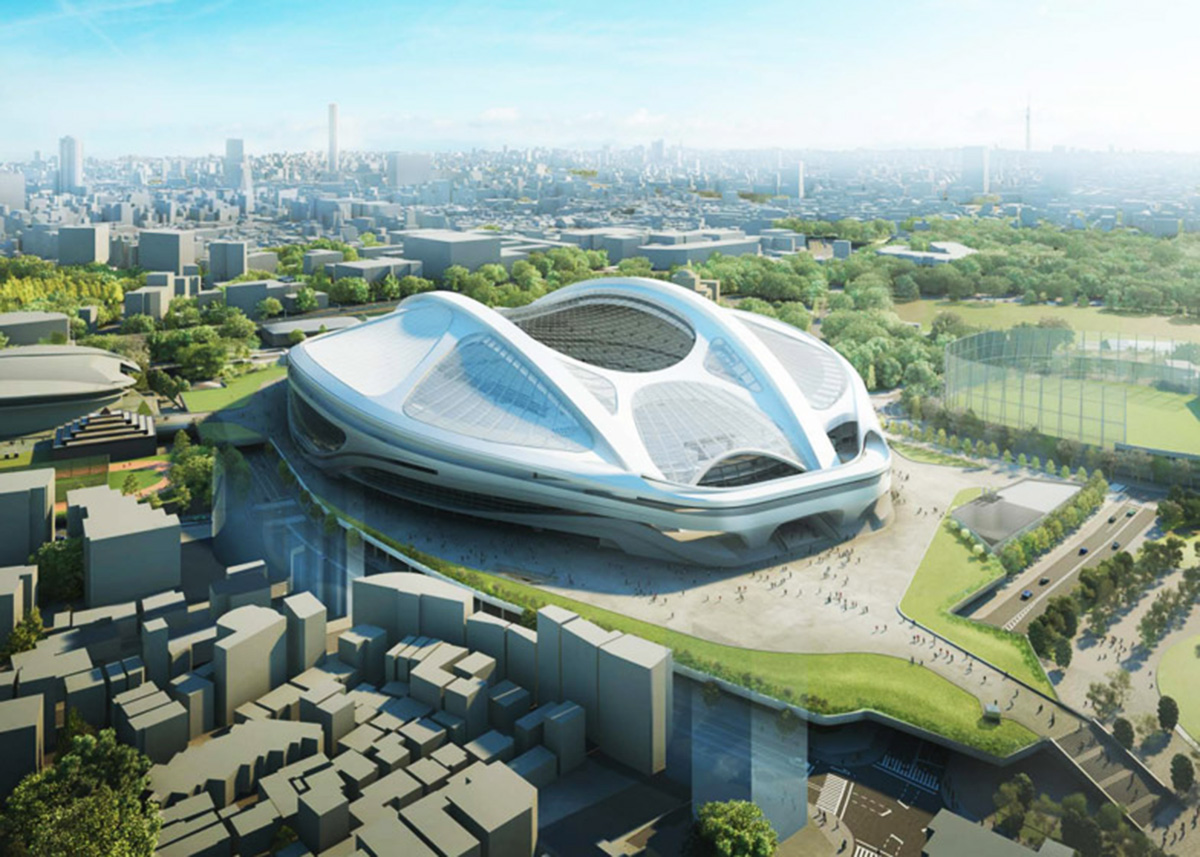Submitted by WA Contents
New Statement by Zaha Hadid Architects about New National Stadium, Tokyo, Japan
United Kingdom Architecture News - Jul 28, 2015 - 16:50 7571 views

Zaha Hadid portrait © Alberto Heras
Zaha Hadid Architects (ZHA) has published a new statement about the most controversial project New National Stadium, Tokyo, Japan. ZHA responsed many questions as related to the budget and construction process of the project in the new statement. Here, we pulish the full transcript of ZHA's new statement below:
''Our teams in Japan and the UK feel it is necessary to set the record straight on the Zaha Hadid Architects (ZHA) design for the new National Stadium for Japan, which has been developed to the client’s brief and budget. It is also only right that the Japanese people are fully aware of the reasons for the reported budget increase and, with exactly five years to go until the Opening Ceremony of the Tokyo 2020 Games, the risks involved with delaying the design process and start of construction.

‘Like a turtle waiting for Japan to sink so that it can swim away’: Zaha Hadid’s revised design for the Tokyo 2020 Olympic stadium. Image © ZHA
In 2012 ZHA was selected by a jury of architects and other experts in an international competition of 46 entries to design a new National Stadium for Japan, which would be ready to welcome the world to Japan for the Rugby World Cup 2019 and Tokyo 2020 Games. We were attracted to the competition by Japan’s vision for a new National Stadium that was designed with the flexibility to open with these two great events and go on to host national, international, local and community sport and cultural events for the next 50 to 100 years.
The design was developed by a joint venture of leading Japanese design offices led by Nikken Sekkei, with ZHA supervising the design development. The team dedicated thousands of hours to develop a design for a new National Stadium to the brief, requirements and budget of our client, the Japan Sport Council (JSC). At every stage over the two years of development, the design and budget estimates were approved by the JSC. ZHA worked proactively to reduce the estimated cost throughout.
For the first time in the construction of a public building in Japan, a two-stage tender process was used, in which contractors are appointed before being invited to submit cost estimates. As ZHA has considerable experience in this process we advised the JSC that working to an immovable completion deadline, against a backdrop of rocketing annual increases in the cost of building in Tokyo, and in the absence of any international competition, the early selection of a limited number of construction contractors would not lead to a commercially competitive process.
Our warning was not heeded that selecting contractors too early in a heated construction market and without sufficient competition would lead to an overly high estimate of the cost of construction.
ZHA also proposed to the JSC that, in this uncompetitive context, reductions to the client’s brief for the stadium, architectural specification and contractor costs would achieve a lower construction price. ZHA has always been prepared to work with the JSC to produce a lower cost design at any time. The budget and design was approved by the Government on 7th July and there was no subsequent request to design a lower cost stadium.
In response to the high costs quoted by the construction contractors, ZHA and all of the design team worked hard with the JSC to ensure the developing design was delivered to the brief and budget, coming up with many cost-saving initiatives including further changes to the design. We also provided objective guidance on the standard materials and building techniques required to build the Stadium. In our experience the best way to deliver high-quality and cost-effective projects is for the selected designers to work in collaboration with the construction contractor and client as a single team with a single aim. However, we were not permitted to work with the construction contractors, again increasing the risk of unnecessarily high cost estimates and delays in completion.
On 7th July a JSC report to the Stadium advisory committee, using figures provided by the appointed construction contractors, incorrectly claimed that the design was responsible for most of the increase in budget. ZHA was not informed in advance of this announcement and we immediately contested this incorrect claim with the JSC. Commentary of the report focused on the steel arches within the design. These arches are not complex and use standard bridge building technology to support the lightweight and strong polymer membrane roof to cover all spectator seats, in addition to supporting the high-specification lighting and services that will enable the Stadium to host many international competitions and events in the future.
The arched roof structure is as efficient as many other major stadia in Japan and the arches allow the roof to be constructed in parallel with the stadium seating bowl, saving crucial construction time in comparison to a roof supported from the seating bowl, which can only be built after the bowl has been completed. The design and engineering teams in Japan confirmed the arches supporting the roof should cost 23 billion yen (less than 10% of the approved budget).
The increase in estimated budget reported by the JSC is in fact due to the inflated costs of construction in Tokyo, a restricted and an uncompetitive approach to appointing construction contractors and a restriction on collaboration between the design team and appointed construction contractors, not the design.
The current building boom in Tokyo increasing construction demand, a limited labour supply and the yen’s significant drop in value greatly increasing the price of imported raw materials have all contributed to Tokyo’s construction costs growing dramatically since 2012/2013 when the new National Stadium project was first announced and Tokyo was awarded the Olympic and Paralympic Games. Between July 2013 and July 2015, Tokyo construction costs increased by an average of 25% and are forecast to increase at a similar rate for the next four years.
Starting the design process again does not tackle any of the fundamental issues that have led to an increased estimate in budget for the National Stadium, which could in fact become even more problematic due to the significant further delay in starting building. Construction costs will continue to rise towards the immovable deadline of the Tokyo 2020 Games Opening Ceremony in exactly five years.
In addition to increasing design and construction costs, due to the rising cost of building in Tokyo, further delays and a rushed design process, led by a construction contractor, risk producing a lower standard National Stadium with limited future usage. Other examples around the world show us that a lower quality stadium could require substantial further investment to be converted for long-term use after 2020, when construction costs will be even higher.
The public, Government and design team have invested in a design that can be delivered through a more competitive procurement process and collaborative approach from construction contractors, within the budget now proposed by the Government and in time to host the Rugby 2019 World Cup.
We have always been, and still are, prepared to use the expertise and knowledge that has been developed to work with the JSC to produce a lower cost design to a change in specification.
Ten days after receiving formal approval of the design, ZHA learned through news reports of the cancellation of the commitment to deliver the approved design for the new National Stadium and commitment for the venue to be ready in time to host the Rugby World Cup 2019. Subsequently we received a brief official notification from the Japan Sport Council (JSC) of their cancellation of the contract to design the New National Stadium in Tokyo.
ZHA remain committed to a flexible and cost-effective new National Stadium that would be ready to welcome the world to Japan for the 2019 Rugby World Cup and become a new home for sport in Japan for many generations to come. The Japanese people, Government and design teams in Japan and the UK have invested a huge amount of time, effort and resources to deliver an adaptable design that can meet the brief and budget set by the Government for a new National Stadium.
To reduce the risk of further increases in costs, the venue not being ready in time for the Tokyo 2020 Games and being of lower quality, the Prime Minister’s review should build on the investment in the detailed design knowledge already established and focus on the need for construction contractors to work in partnership with this expert team.
We have written to the Prime Minister to offer our services to support his review of the project with the current design team. ZHA has also outlined how making use of the significant investment in detailed design work already carried out offers the most cost-effective solution to create the best new National Stadium for the people of Japan for the next 50-100 years.
In the coming weeks we also plan to share, in Japan and across the international design community, the many innovative solutions achieved through the years of work and investment that has gone into the design for the National Stadium.''
> via zaha-hadid.com
